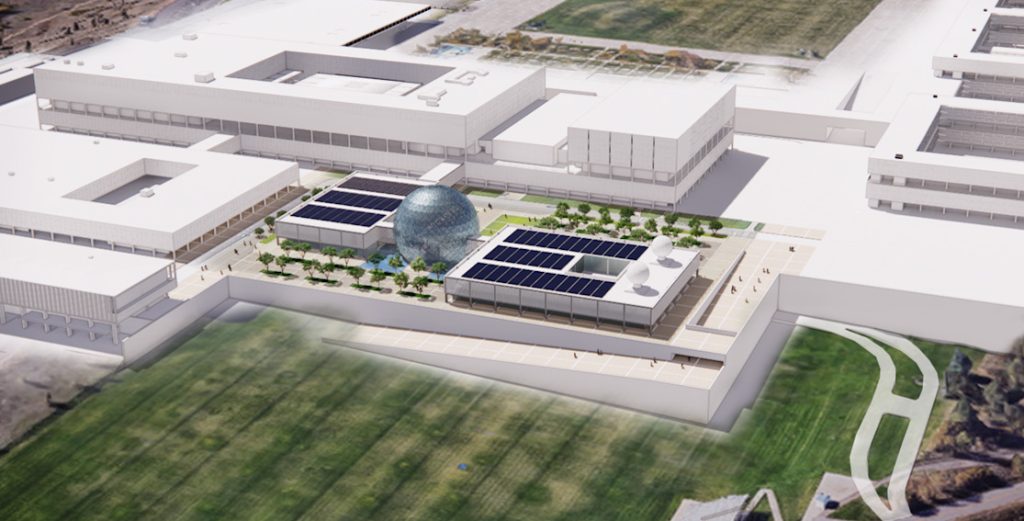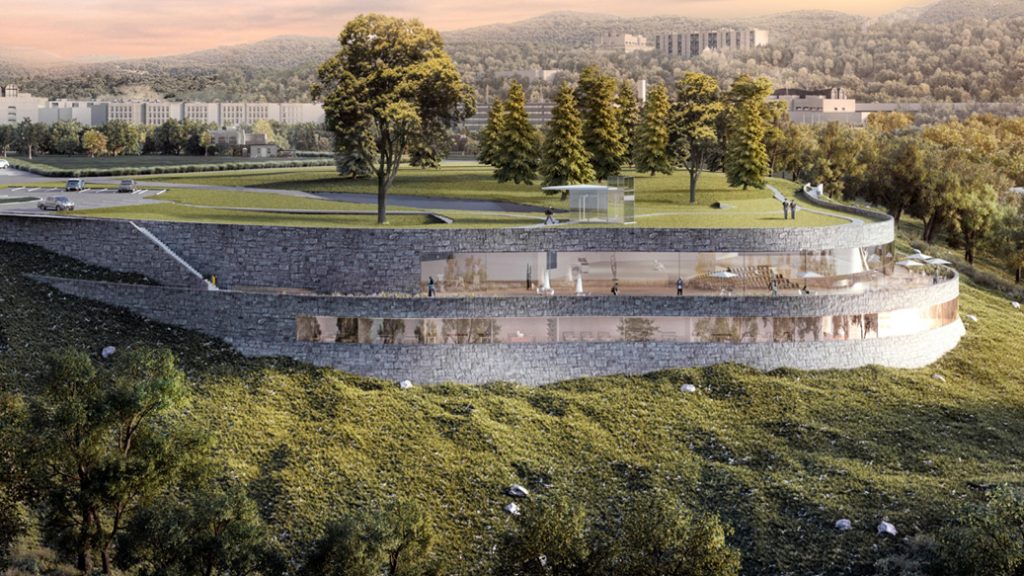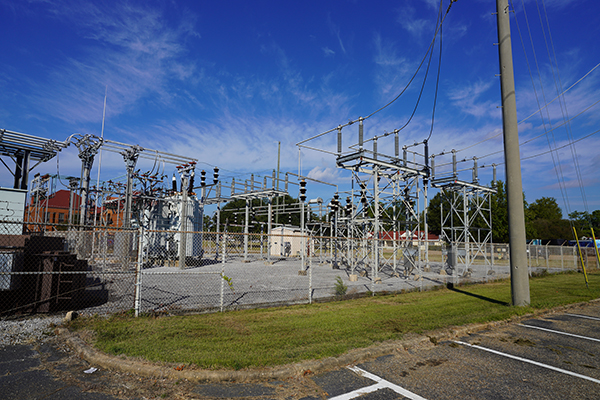By Daniela Lawrence, M.SAME, Col. Greg Boylan, Ph.D., USA, Cdr. Mike Cost, M.SAME, USCG, Sara Phillips, AIA, and Matt Riggs, P.E., PMP, M.SAME
The U.S. service academies are modernizing their campuses while addressing the challenges of tomorrow-from sea-level rise and sustainability concerns to offering facilities able to meet the education needs of our next military leaders.
In the landscape of American military history, the U.S. Military Academy, U.S. Air Force Academy, U.S. Naval Academy, and U.S. Coast Guard Academy stand as pillars of excellence, tradition, and innovation. Today, as they navigate the physical and educational challenges of the 21st century, however, these institutions face the substantial undertaking of modernizing their infrastructure and training methods to anticipate future battlefields.

This transformation goes beyond mere aesthetics to reflect virtues of adaptability, foresight, and resilience, while underscoring the role of the service academies as leadership laboratories.
Transformative efforts across the academies include West Point’s Strategic Synchronization Matrix, the Naval Academy’s digital modeling to tackle sea-level rise, the Coast Guard Academy’s shift to sustainable energy, and the Air Force Academy’s ambitious Space Education Center initiative. These contemporary revitalizations are shaping the future of military leadership and education.
Their strategies also serve as a blueprint for innovation and sustainability, lighting a path for organizations far beyond the military sphere that are eager to evolve in a rapidly changing world.
A Holistic Strategy
West Point’s Strategic Synchronization Matrix is a multifaceted roadmap that balances immediate needs with long-term strategies. The matrix’s complex design, combined with its clear direction, significantly influences West Point’s growth—exhibiting a dedication to adaptability, quality, and foresight.
The renovation of Thayer Hall and the creation of the new Cyber & Engineering Academic Center offers a vivid example of the Strategic Synchronization Matrix in action. Rather than starting with grand architectural schemes, the matrix identified a series of subtle personnel and organization moves and seemingly insignificant building renovations that were kingpins to the larger picture. The ability to understand intricate interconnections within the system is critical for success. Every aspect of organizational logistics, personnel movements, and small construction efforts plays a vital role. The Strategic Synchronization Matrix facilitates recognition of these connections.
The matrix also serves a practical purpose in translating the academy’s goals into a clear instruction manual. This transparency fosters dialogue with stakeholders and secures support, showcasing West Point’s commitment to methodical strategy and planning. Such clarity not only instills confidence in those overseeing costs, but also illustrates lessons in strategic thinking, complexity management, and vision alignment.
The story of Thayer Hall’s renovation and the new Cyber & Engineering Academic Center beginning from seemingly minor personnel shifts and construction projects reveals the importance of understanding even the most subtle links in shaping the future. Through the Strategic Synchronization Matrix, West Point embodies resilience, vision, adaptability, and readiness to adapt to the rapidly changing global defense landscape.

Link. IMAGE COURTESY AECOM/USMA
A Leap Into the Future
Built between 1954 and 1958, the entire Air Force Academy campus symbolizes a cohesive approach to design and construction. However, its simultaneous development also has led to a singular challenge: the whole campus now requires coordinated renovation. This presents significant logistical and funding hurdles, while demanding a vision that respects both legacy and future.
The story of Thayer Hall’s renovation and the new Cyber & Engineering Academic Center beginning from seemingly minor personnel shifts and construction projects reveals the importance of understanding even the most subtle links in shaping the future.
Not only does the academy aim to maintain its existing infrastructure, but it must also look to the future and expand with the new U.S. Space Force mission. Recognizing the escalating importance of space in defense, leadership has acknowledged the school’s role as an institution for both the Air Force and the Space Force. This epitomizes the academy’s ability to innovate while meeting renovation needs, and for
cutting-edge facilities that will stimulate interdisciplinary learning.
The Air Force Academy’s dual focus on preserving the past while forging the future symbolizes resilience and adaptability. The need for simultaneous renovation has become an opportunity to reframe the campus at the cutting edge of military education. By catering to both the Air Force and the Space Force, the academy underlines its commitment to multifaceted excellence. The Space Education Center initiative highlights this devotion to evolving defense necessities, accentuating the ability to foresee the future, strategically align resources, and retain supremacy in military education—all with a focus on environmental sustainability.
Adapting to Climate Change
Recognizing sea-level rise as a critical threat to its campus, located alongside the Chesapeake Bay in Annapolis, Md., the Naval Academy took a forward-looking approach to developing a digital twin and comprehensive strategies to protect the school and grounds against rising tides. This effort leveraged digital modeling tools to study potential impacts on infrastructure. The result is more robust buildings designed to withstand the challenges posed by climate change.
In addition to leveraging technology, the academy has invested in local expertise to build a more sustainable future. This includes an in-house ocean scientist professor who spent a year travelling and collaborating with global experts to create a playbook as the basis of the school’s 100-year sea level resilience plan. The school also implemented an innovative building maintenance strategy— investing in annual summer renovations to extend the life of facilities without the need for major overhauls. This continuous rejuvenation has breathed new life into campus infrastructure.
The Naval Academy has acknowledged and strategically addressed the threat of sea-level rise, maximized the potential of local talent, and innovatively managed its infrastructure. This approach exemplifies how military institutions and other organizations can meet the demands of an ever-changing environment; be resilient, innovative, and committed to excellence; and lay the groundwork for how to thrive in achieving both the core mission and in their responsibilities as stewards of the land they operate on.
Embracing Sustainability
With 1,100 cadets and a sprawling campus of 28 major buildings, the Coast Guard Academy navigates the unique challenge of historical preservation requirements with innovation and resilience. In recent years, the academy has moved from fuel oil to natural gas and incorporated solar energy to reduce energy usage by 48 percent and save $2 million annually.
In addition to energy savings, a 15-year renovation effort has modernized barracks and rejuvenated the entire grounds. Collaboration, incremental improvements, and non-appropriated sources, such as the Maritime Center of Excellence that was primarily funded by donations, are central to this transformation. Further plans to build more centers aim to align the academy with contemporary educational needs.
The complexity of this transformation is evidenced by strategic planning and taking a long-term viewpoint – synchronizing growth within constraints and creating a balance between operational, historical, and modern needs. The Coast Guard Academy’s multifaceted approach to these interrelated challenges stands as a testament to what visionary leadership can achieve.
Inspirational Roadmap
An examination of the current aspirations of the U.S. service academies unveils a model of organizational resilience and innovation, seen in strategic synchronization, modernization, coastal protection, and energy practices.
An effective modernization effort involves meticulous planning, stakeholder alignment, and process streamlining. Simultaneous renovation underscores the importance of agility in societal changes and facility lifecycles. Through environmental awareness and local talent utilization, a model for sustainable infrastructure emerges, complemented by innovative funding avenues.
The balance between tradition, innovation, and sustainability offers a multifaceted strategy that preserves history while embracing modern needs. These lessons extend beyond these leadership proving grounds and can guide various government organizations in fostering trust, collaboration, and resilience.
The innovations and best practices at the service academies offer an inspiring roadmap for more than just military strategy. Their embrace of strategic planning, sustainability, and community collaboration symbolizes a path forward that is both globally connected and deeply rooted in local creativity and values. It is an empowering call to action—reminding us that the potential to innovate and adapt lies within us all, ready to shape a resilient and forward-thinking future.

Daniela Lawrence, M.SAME, is Facility Planning & Sustainability Program Manager, U.S. Air Force Academy, Colo.; daniela.lawrence@afacademy.af.edu.
Col. Greg Boylan, Ph.D., USA, is Director, Strategic Resource Planning & Integration, U.S. Military Academy at West Point, N.Y.; gregory.boylan@westpoint.edu.
Cdr. Mike Cost, M.SAME, USCG, is Facilities Engineer, U.S. Coast Guard Academy, Conn.; nichael.n.cost@uscg.mil.
Sara Phillips, AIA, is Deputy for Facilities & Construction, U.S. Naval Academy, Md.; phillips@usna.edu.
Matt Riggs, P.E., PMP, M.SAME, is Senior Federal Project Manager, AECOM; matt.riggs @aecom.com.
More News from TME
-

Providing Benefits Through Adaptive Reuse of Federal Assets
Reconfiguring existing sites or buildings for a new mission has many inherent advantages to solve challenges that face federal entities, but key considerations need to be accounted for in order to maximize value. -

Electrifying Solutions for Military Installations
As military installations implement electrification measures into the future, the challenges they face will not just require innovative technology solutions but embracing a holistic delivery approach implemented early in projects. -

Driving Resilience Decisions Through Better Data
The Air Force Office of Energy Assurance is demonstrating how a new iteration of resilience assessments can better target and quantify potential vulnerabilities in energy security—bolstering national defense by supporting more informed decisions on resilience improvements at installations.